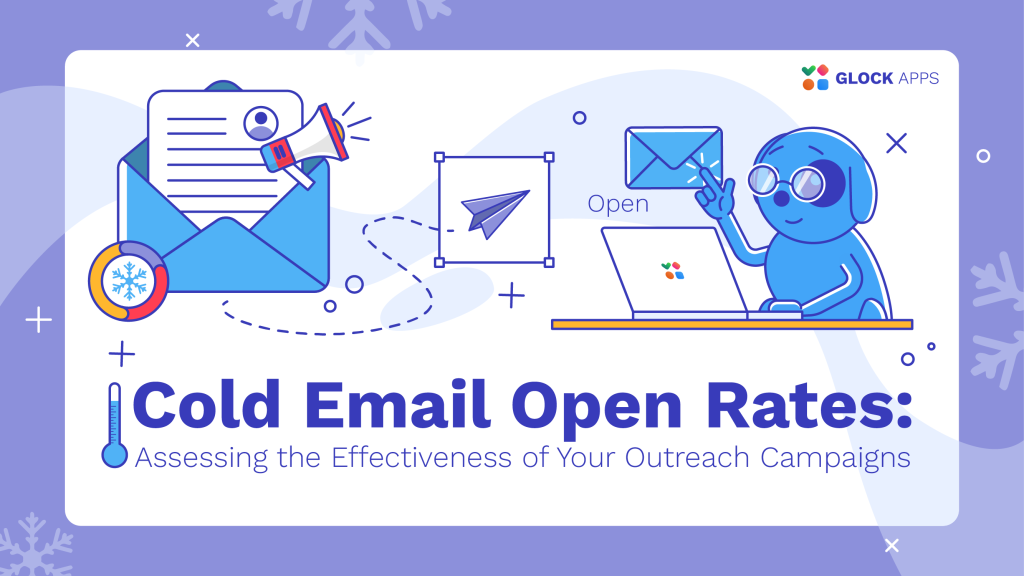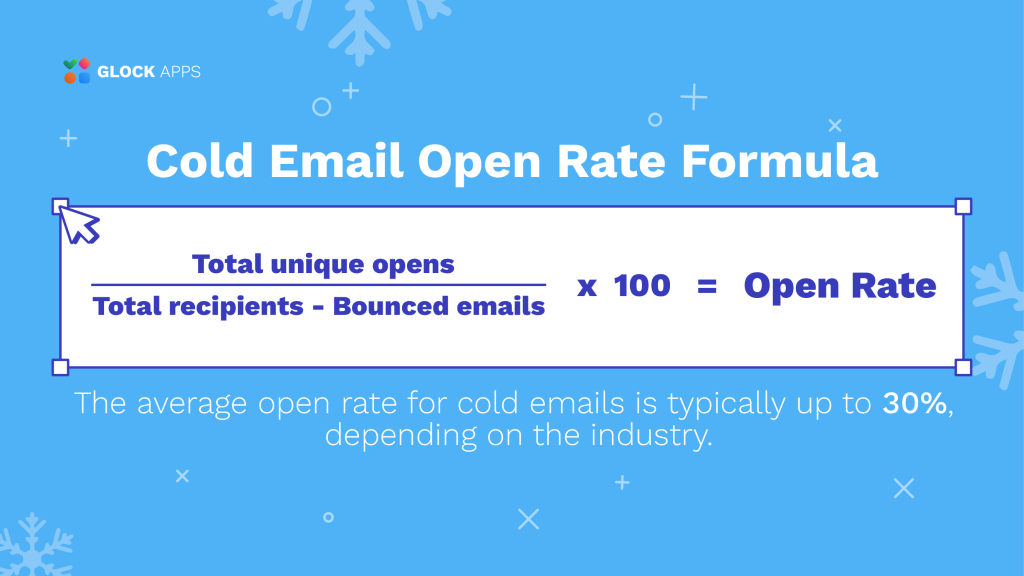Cold Email Open Rates: Assessing the Effectiveness of Your Outreach Campaigns

Table of contents
- Are Cold Email Open Rates Important and Should You Track Them?
- Cold Email Open Rate Meaning
- What Is a Good and Bad Open Rate for Cold Email and How to Boost it?
- Understanding The Real Story Behind Open Cold Email Rates
- Why Are Cold Email Open Rates No Longer the Best Metric?
- What Metrics Should You Track Instead?
Are Cold Email Open Rates Important and Should You Track Them?
After working so hard on crafting your cold emails, low open rates can be frustrating and undermine your efforts. All that time spent researching prospects and carefully choosing your words can be wasted if your emails go unopened. However, don’t give up, because cold emails are still a powerful way to reach potential customers, so it is worth competing for them.
When prospects receive countless cold emails every day, standing out from the crowd and grabbing their attention is quite a strategic task for modern email marketers. Here, we’ll take a look at the average open rate for cold emails, how to measure success and gaze at the real story behind this metric.
Cold Email Open Rate Meaning
The open rate is a metric that indicates the percentage of your cold emails that have been opened out of the total number sent.
Tracking and understanding open rates gives you insights into the performance of your cold email campaign and serves as an indicator of your email deliverability.
How to Calculate Cold Email Open Rates?
Almost all tools for cold outreach allow you to instantly track the open rate of your campaigns, which is very convenient. If you’re doing it manually, here is an accurate method for easy calculating:
Cold Email Open Rate Formula:
(Total unique opens / (Total recipients – Bounced emails)) x 100 = Open Rate

For Example:
Let’s say you sent out 5000 cold emails to potential leads.
Out of those, 4500 emails successfully reached the recipients’ inboxes, but 200 emails bounced back.
Put these numbers into the formula:
(1200 / (5000 – 200)) x 100 = (1200 / 4800) x 100 = 25%
So, as you can see, the open rate for this example would be 25%, but how successful is this result?
What Is a Good and Bad Open Rate for Cold Email and How to Boost it?
A good open rate for a cold email campaign typically exceeds 20% for larger prospect bases (e.g., 1000 and above) and 40% for smaller, targeted lists. However, ideal rates vary depending on factors like audience, industry and target demographic. Generally, achieving an open rate of over 50% is exceptional, particularly in the B2B space.
A low cold email open rate means that only a small portion of recipients, perhaps less than 10%, are actually opening your letters. This indicates that there are some issues with how your emails resonate with your audience or how they land in their inboxes. It’s a sign that you may need to change your approach to make your messages more engaging and ensure that they are received by improving deliverability.
On average, cold emails get opened about 15% to 24% of the time, while warm emails see higher rates, ranging from 21% to 34%. Interestingly, if you personalize those cold emails, you’re looking at a 22% better chance of catching someone’s eye. So, adding that personal touch can really make a difference!
Practice shows that cold emails with a subject line of 6-10 words usually have about a 21% open rate and negative subject lines can lead to a 34% decrease in the number of opens.
Although the average open rate is usually less than 30%, this powerful lead-generation tool outperforms social media channels by 40 times. Targeted and smart approaches can increase this figure to 80%.
Understanding The Real Story Behind Open Cold Email Rates
So, let’s talk about whether open rates are as accurate as we think, shall we? Well, not really. Industry experts say that opens are just assumptions that people are interested in what you have to offer in your email, and these expectations can be quite misleading for technical reasons. So, even if your email may technically be delivered, it’s hard to know if it’s actually been opened.
Why Are Cold Email Open Rates No Longer the Best Metric?
While open rates are still a popular metric, savvy email marketers should be cautious about using this cold email metric as a measure of campaign results, and here’s why:
- Inaccurate Results
Cold email open rates may not provide a complete and accurate picture of recipient engagement. Factors such as privacy features, image blocking, and email client settings can affect tracking, leading to discrepancies in reported open rates.
- Limited Analysis
Open rates only indicate whether an email was opened, but do not reveal the recipient’s level of interest after that first action. Therefore, you shouldn’t rely on these metrics alone, as you may lose sight of other important metrics that reflect genuine interest and impact business results, such as replies and conversions.
- Changes and Updates from Providers
With stricter safety and privacy laws and email service providers implementing severe tracking policies, the reliability of open rates as a metric is declining. Large companies such as Apple and Google are increasingly tightening rules and restricting email tracking, which makes open rates less reliable over time.
Some marketers are complaining that with Google algorithm’s latest update, using tracking pixels makes it more likely to end up in spam and decrease deliverability.
- Misleading Data
Open rates can be misleading due to technical factors and business considerations. Bots, spam filters, and preview modes can artificially inflate open rates, while the actual level of engagement may be significantly different. Focusing too much on open rates can lead you to draw wrong conclusions about the effectiveness of your strategy.
In the big picture, while open rates give a glimpse into campaign success, marketers should tread carefully and study a variety of metrics to accurately measure the results of their cold emails.
What Metrics Should You Track Instead?
It seems that the cold email open rate isn’t the most reliable metric to rely on today. To truly gauge the success of your cold outreach, concentrate on metrics that reflect your email performance in the subscribers’ inboxes.
Easily monitor your deliverability with dedicated solutions like GlockApps to ensure your emails are landing in the main boxes and not being marked as spam. Set up regular automatic spam tests with the Inbox Insight tool for your cold outreach needs and get immediate notifications and suggestions when you need to make adjustments or change your domain and mailboxes.
Shift your focus to key deliverability metrics so you can better optimize your cold email campaigns and succeed in your strategy.



